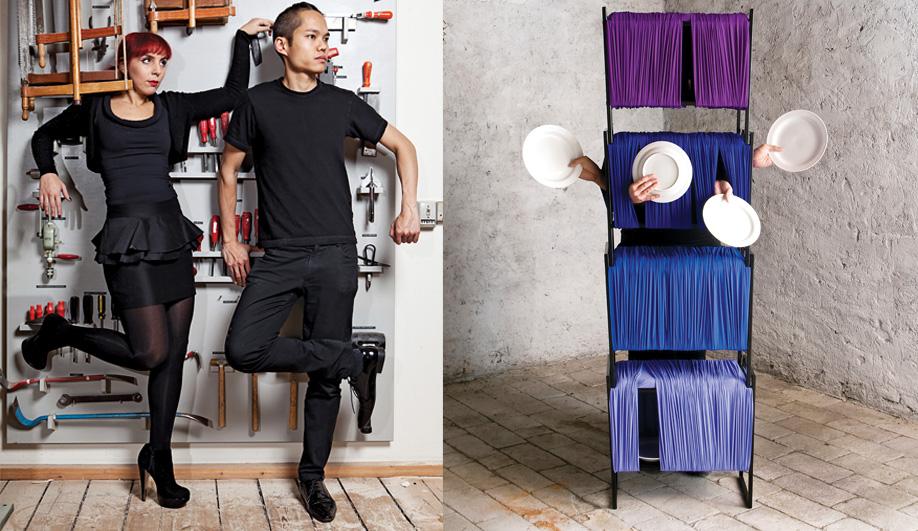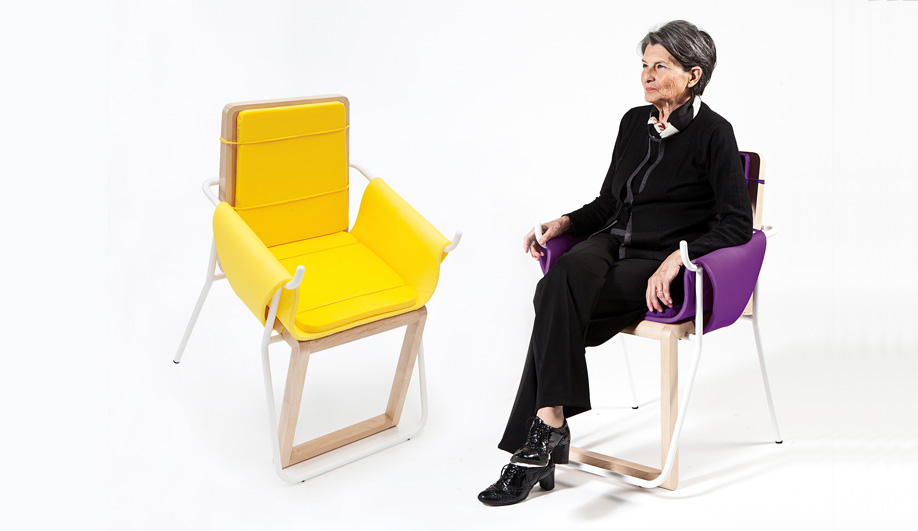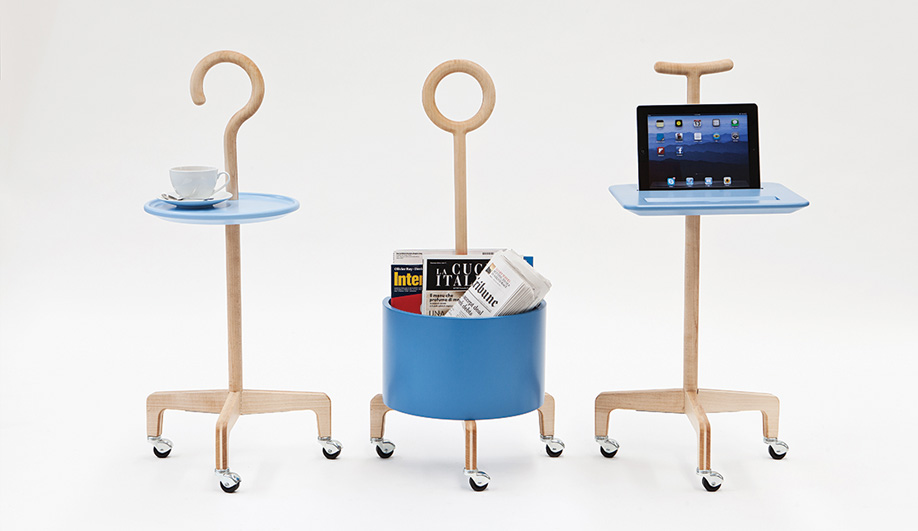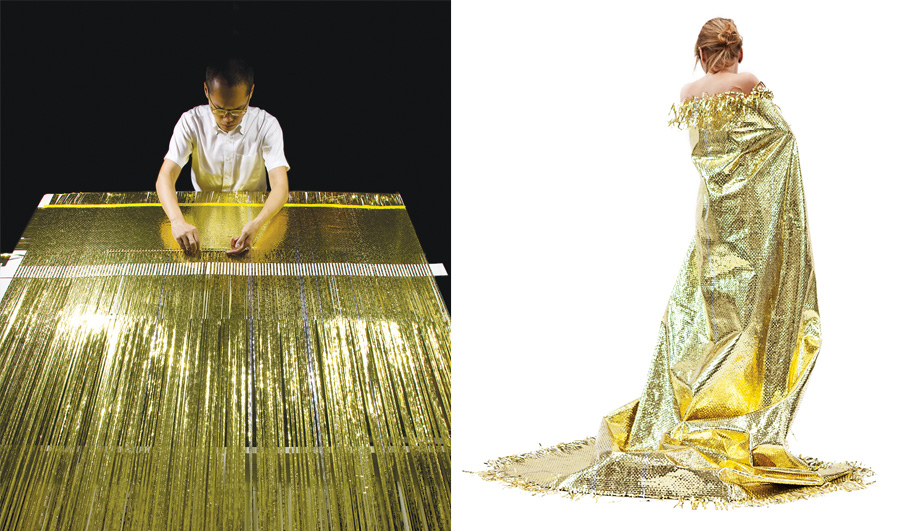
Francesca Lanzavecchia and Hunn Wai are sipping tea while talking to me via Skype. Though he lives in Singapore, Wai is visiting Lanzavecchia in Pavia, Italy, 35 kilometres south of Milan. The couple – partners in life as well as in design – are pros at long-distance communication, and they spend hours each day online discussing and fine-tuning projects. “We are connected all the time,” says Lanzavecchia, laughing. “Our studio never goes to sleep.”

Their sheer output over the past year attests to this. In April, at Salone Satellite, the exhibition devoted to emerging designers at Milan’s Salone del Mobile, they showed a small series of objects for the elderly, entitled No Country for Old Men. Exploring “the fragility of the human body,” this was not exactly the breakout collection one might expect from the dynamic, red-headed Lanzavecchia, 29, and Wai, 32. Nonetheless, it stood out against the endless array of sleek chairs launched at the fair. “We thought, why not address this elephant in the room that no one really cares about?” Wai says.

So they devised the handsome natural maple Together Canes, which incorporate trays and bins in blue MDF and enable users to transport their drinks, knitting or iPads across a room. And they introduced a new category of chair, one that represents a low-tech solution to an age-old problem: how to get out of a chair when you have compromised mobility, muscle tone and bone density. Clad in a technical stretch fabric, Assunta is a wooden chair with no back legs, supported by a tubular steel frame. Users simply step on the foot bar to tip their bodies forward and ease themselves out. The chair extends the mobility of the elderly body; and while so much furniture for seniors is complicated and aesthetically unrefined, “We wanted the object to communicate the reason it was born but not have extra mechanical bits,” says Lanzavecchia.

If No Country for Old Men was practically concerned with aging, the other innovation the duo presented in Milan displayed a purely poetic relationship with the human form. As part of a collective exhibition called Another Terra – held in the Ventura Lambrate district and curated by Italian architects Barbara Brondi and Marco Rainò – Lanzavecchia and Wai contributed a golden “space quilt.” Wai and an intern wove the piece by hand over a month, from Mylar strips stamped with the names of all the objects and people a person touches in a given day. In press images, the golden tapestry is draped over a nude woman, seeming both futuristic and humanistic. (After all, Mylar was developed by NASA, yet is used in hospitals to keep patients warm.) According to Brondi and Rainò, the designers interpreted the brief with “major poetic force.” Rainò says, “They have the capacity to evoke extraordinarily powerful and engrossing imaginary worlds through a design that is concrete and direct.”
Catching the creative world off guard has been Lanzavecchia and Wai’s modus operandi since they met at the Design Academy Eindhoven in 2006. Gijs Bakker, their teacher at Eindhoven and a co-founder of Droog Design, remembers their final thesis projects vividly. “Francesca made a strong impression on me with her ‘pro(ae)sthetics,’ ” he says, referring to the back and neck braces, canes and crutches she named “body accessories.” And,
he continues, “Hunn questioned the world of interior objects by destroying and reconstructing them with non-constructive materials such as clay. Their work together shows a combination of elegance and functionalism.”
Wai is the more “clashing guy,” whereas Lanzavecchia seeks to create an emotional and intimate connection between people and objects. Despite their disparate backgrounds, they grew up on a similar cultural diet: Teenage Mutant Ninja Turtles, The Fresh Prince of Bel-Air and, of course, the films of the Coen brothers. “And we both eat spaghetti,” adds Wai with a grin. In Singapore, Wai works from home and employs freelancers and interns as needed, while Lanzavecchia and two freelancers refine projects at her studio inside a 14th‑century palazzo in Pavia. They globe-trot together to such places as Hong Kong and Shanghai, and visit each other a few times a year for several weeks at a time. “It’s important for our work that we keep one foot in Europe and one in the newest countries,” she says.

So far, they have made one-off items or small batches, like a delicate series of lights in bamboo and rice paper created with Singaporean artisans, and a line for the Mercedes Benz Home Collection. Their debut collection, Spaziale, was made of handcrafted wooden frames enclosed by tensile Lycra; the shelf system, a commode and a seating nook took on the forms of the people and the objects that occupied them. “We were after this tactility – how different materials could interact with the human body,” says Wai. “How do you make an object feel closer to you? You wouldn’t normally hug a pinewood chest of drawers.” Yet in press images art-directed by Lanzavecchia, they dare you to get intimate with and inhabit their furnishings in expressive ways.
As international manufacturers hover over them (industrial pieces such as a bed, a furniture line for babies, and a “space-defining” spa for a South American client are in the pipeline), they will fight to preserve the intimacy their work invites. With an Italian brand interested in producing the Together Canes, their boundary-pushing ingenuity might just gain a market that design has tended to neglect.
